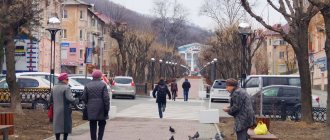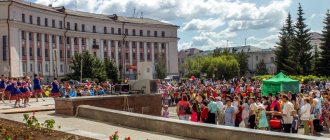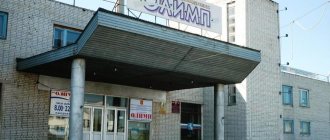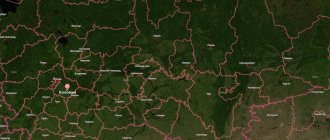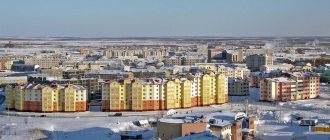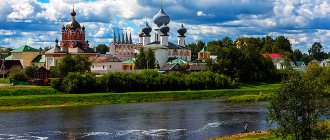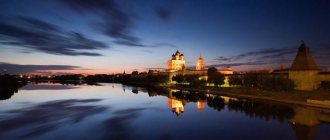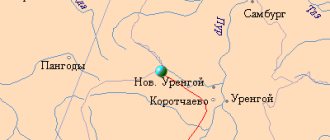A city in the Primorsky Territory, the third largest, after Vladivostok and Ussuriysk. The total area of the urban district is 326 square kilometers. Population – about 150 thousand inhabitants.
The discovery appeared on the map of Russia relatively recently. The year of foundation is recognized as 1864. City status was awarded 86 years later during Soviet times. Until the 30s, the name Nakhodka applied only to the bay. The settlement was called American. Obtaining city status in 1950 gave impetus to the development of Nakhodka. In addition to the expansion of the port, the first avenue appeared in the city, a nautical school was opened, and a ship repair plant was founded.
Attempts to create a free economic zone on the territory of the Nakhodka urban district were unsuccessful at the turn of the 20th and 21st centuries.
Climate and natural areas
Looking at the map of Nakhodka from a satellite, it is obvious that the climate of this settlement is influenced by the Sea of Japan and the Pacific Ocean as a whole. At the end of summer, there are periodic typhoons coming from the equatorial part of the ocean.
The climate here is moderate monsoon, with dry winters (ground freezing up to one and a half meters) and short, humid summers. Autumn is hot and dry and lasts up to three months.
Closedness from the continent and the sea creates a special microclimate and the water temperature in the bay is stable in the summer (around +24 degrees Celsius).
History of the founding of the city
Hello. My name is Tatyana. I would like to tell you about the beautiful city of Nakhodka. Let's start with his story.
Nakhodka is a port city in the south of Primorsky Krai, Far East of Russia. Its history dates back to the founding of a military hydrographic post in 1864. The port was built in the 40s of the last century by GULAG prisoners. After all, there used to be transit camps here. In fact, some areas of the city grew up on the site of the camp barracks. The railway and houses (on Leninskaya, Third Section, Moruchilische) were built by Japanese prisoners of war.
Routes on the map of Nakhodka. Transport infrastructure
Nakhodka is connected to other settlements by railways and roads. The airport and sea terminal are currently not used for passenger transportation. The nearest seaport and airport is located in Vladivostok.
Railway
A dead-end railway line runs through the city with its final destination Mys Astafieva (port). Within Nakhodka there are two main passenger railway stations:
- Pacific;
- Nakhodka.
For commuter electric trains, there are four more stations and seven stopping platforms. The main station of the city is the Pacific station , which is the final destination of the Khabarovsk - Pacific train. The train schedule for both stations is identical. Only in the summer is the Khabarovsk - Nakhodka train added, which does not go to Pacific. From here you can get by rail to Khabarovsk, Vladivostok, Partizansk, Ussuriysk.
Bus service
There is one bus station in the city, and if you look at the map of Nakhodka from a satellite, it is located in the port area, although it is located on the central avenue. Intercity and suburban buses depart from here daily.
From Nakhodka you can get without transfers to Ussuriysk, Vladivostok, Dalnegorsk, Artyom, Spassk-Dalniy, Arsenyev. There are two suburban routes within the city district.
City public transport
It is enough to look at a map of Nakhodka with streets to understand that the main transport route of the city is Nakhodkinsky Avenue. Without exception, all bus routes, one way or another, cover part of their route along it.
The total list of routes is about one and a half dozen. In summer there are a little more of them, for trips to the country and to the sea. In the morning and evening, electric trains also become urban transport, running from one end of the city (Mys Astafiev station) to the other (Nakhodka station) and in the opposite direction.
Population of Nakhodka for 2021 and 2021. Number of residents of Nakhodka
Data on the number of city residents are taken from the Federal State Statistics Service. The official website of the Rosstat service is www.gks.ru. The data was also taken from the unified interdepartmental information and statistical system, the official website of EMISS www.fedstat.ru. The website publishes data on the number of residents of Nakhodka. The table shows the distribution of the number of residents of Nakhodka by year; the graph below shows the demographic trend in different years.
Links to official documents and resources on the population census are marked with a [*] sign; when you hover your mouse, you will see the title of the document.
| Number of residents of Nakhodka | Years |
| 173,500 people | 2005 year |
| 171,700 people | 2006 |
| 170,000 people | 2007 |
| 168,500 people | 2008 |
| 166,540 people | year 2009 |
| 159,719 people | 2010 |
| 159,700 people | 2011 |
| 158,929 people | year 2012 |
| 158,358 people | year 2013 |
| 156,442 people | year 2014 |
| 155,722 people | 2015 |
| 153,581 people | 2016 |
| 151,420 people | 2017 |
| 149,316 people | 2018 |
Graph of population changes in Nakhodka:
The total population of the city in 2014 was 156,442 people, which puts it in third place in terms of this indicator among the cities of the region. Since 1993, the city has seen a constant trend of population decline. Basically, this situation arose from the departure of residents to other places; to a lesser extent, natural decline affected. Most of the people living in Nakhodka are women. The number of pensioners in the city at the beginning of 2013 was 27%.
In 1950-1992, the increase in the number of residents was determined by the migration influx. Since 1993, Nakhodka has had 35,000 fewer residents.
As part of the program to assist the resettlement of compatriots from other countries, 19 people moved to the city in 2009-2010.
In 2002, the national composition was distributed as follows: Russians (89.8%), Ukrainians (3.7%), Koreans (1.1%), Tatars (0.9%) and Belarusians (0.7%). By 2010, the total number of Russians decreased by almost 10%, and there were also fewer Ukrainians. Representatives of such peoples as Tajiks and Lezgins appeared in the city.
Nakhodka is part of the agglomeration of the same name, which also includes the city of Partizansk, located 50 km from it.
Ethnic names: Nakhodkinets, Nakhodchanka, Nakhodka residents.
Sights of the city of Nakhodka
Nakhodka is a young city, so its attractions are modern monuments and nature. The symbols of this settlement are three hills: Sister, Brother and Nephew. The following monuments stand out:
- symbol of two anchors;
- stele of coming of age (for the 18th anniversary of the city);
- monument to partisans;
- stele "Nakhodka" with an observation deck over the city and the bay);
- Japanese rock garden.
The embankment deserves special attention . The city has two cinemas and one entertainment center with a concert hall. There is a dolphinarium on the territory of the village of Livadia. Nakhodka also has a bowling alley and several nightclubs.
Main areas
Initially, the development of Nakhodka was carried out along the coastline, and subsequently residential neighborhoods appeared close to industrial enterprises operating in the vicinity. The main highway stretches across the entire coastal part parallel to the bay, dividing the city into three main districts.
Districts in Nakhodka:
- Central.
- Northern.
- Southern.
The central district is the heart of the city , where the city district administration, offices of large commercial companies, and business centers are located. There are supermarkets, shopping centers and large markets here. The historical center of Nakhodka is Lenin Street, which is lined with Stalinist houses. There is a football stadium, a municipal cultural center and the Diamond Nakhodka nightclub. In the Central District there are such neighborhoods as Pogranichny, Khema and Third Section. These are quiet green streets, atypical for Russian cities.
The northern region, which locals call KPD, is located in the valley of the Partizanskaya River. This territorial formation arose around the village of Severny and in the 70-80s of the last century it was actively built up by the private sector and five-story panel buildings. All buildings dating back to the beginning of the 20th century were destroyed by a serious fire in 1970. Therefore, there are practically no old houses preserved here. This is a large industrial zone where there is a city boiler house, a mechanical plant, an efficiency plant, a Stroitel base and a helium station currently under construction.
The southern area is a typical bedroom , built up with 5 and 10-story buildings. In the southwestern part of this microdistrict there is the former satellite village of Rybak, which opens directly to the bay. In the Southern District, the Primorets shopping center, a retail market, a hospital, a clinic and other social infrastructure facilities have been built. Local authorities plan to renovate this quarter, demolish the old five-story panel buildings and install modern low-rise luxury housing here.
Hope for a bright future
Despite all the problems, there is certainly hope. We hope that the authorities will turn their faces towards us, because Nakhodka has rich potential. Instead of making short-term profits and selling minerals, you can develop mariculture. Moreover, nearby there is a marine reserve “Vostok Bay”, where they breed marine aquatic organisms. With the fishing industry it is possible to boost domestic shipbuilding and ship repair. It is also necessary to pay attention to the recreational potential of the city, because the entire Far East comes to us to relax by the sea.
We, Nakhodka residents, love our city very much. And we believe that our Nakhodka will never become a loss for us.
Outflow of population
Despite the fact that outwardly the city seems to be alive, in general the population is depressed. Many people leave here with their entire families. Direction: center and south of Russia, Krasnodar region. Among the reasons cited are high prices for food and housing and communal services, deteriorating environmental conditions, and lack of work.
Our prices are truly one of the highest in Russia. At the same time, salaries are the same as everywhere else in the country. Fish caught in the waters of the Sea of Okhotsk and the Sea of Japan, here in the Far East, costs an order of magnitude higher than in the west of the country. The environment is getting worse every year.
Mining town and environmental disaster
Our city is a port. The port must work, it must live. In the late 90s - early 2000s, almost all the berths were filled with wood, and the commercial port was filled with Japanese cars. Nowadays there is coal everywhere.
The main problem is coal dunes
They overload it around the clock. And everything would be fine, but our port is not at all suitable for transshipment of such cargo, because it is carried out in an open way, and the port facilities are located 100-500 meters from residential buildings.
The buildings of the Primorsky plant and coal on the piers opposite residential buildings.
Over the past five years, Nakhodka has actually turned from a city of sailors and fishermen into a city of miners. Involuntary. During transshipment, coal dust covers everything within a radius of several kilometers. It is not only on buildings, cars, trees. Coal dust penetrates into homes (with the windows closed) and into the lungs of Nakhodka residents.
The once ecologically clean microdistrict of Cape Astafiev (previously people moved here to live precisely because of the remoteness from the entire city and proximity to the sea) has turned into an area of environmental disaster. From the coal dunes to houses, a kindergarten and a school there are only 200-500 meters. People would be glad to leave here, but there is nowhere and nothing to do. There are very few people who want to buy an apartment here, in the epicenter of coal transshipment.
Cape Astafiev area, coal is loaded next to houses.
Our city is located along the port. Coal is loaded at almost all piers, which means that residents of the entire Nakhodka suffer from it. Children in kindergartens come grimy not from dirt, but from coal dust, which settles everywhere. Bronchopulmonary diseases have become more frequent, which is not surprising.
Coal in the Commercial Port.
Many miners have an occupational disease - silicosis. Only they receive compensation for the harm caused to the body. And residents of Nakhodka breathe coal for free.
The sea is also actively polluted by coal. In winter, the water area is covered with blackened coal, the rest of the time there is a film of coal dust on the water. Where three to five years ago there was a beach and a place of mass summer recreation, now only its name remains. Coal in water, on sand. Coal also has a negative impact on marine biota. Crabs with coal under their shells and in their claws are no longer uncommon.
Coal in sea water.
Today Nakhodka is a territory of environmental disaster.
The looming disaster - the construction of chemical plants
Another blow to the ecology of Nakhodka is the planned construction of the largest chemical plants near the city: a complex of petrochemical and oil refining plants (VNHK) and a mineral fertilizer plant (NZMU).
Read: How people live in villages surrounded by factories, mines and mines.
While active planning and development of project documentation are underway, local residents have been opposing this expansion for several years, because they understand that after the construction of these giants, the ecology of Nakhodka will be completely destroyed. What’s noteworthy is that the petrochemical plant and oil port are planned to be built in Vostok Bay, the only warm sandy bay where Far Easterners relax in the summer, and where a protected area is located - the Vostok Bay state marine reserve.
Sandy beach in Vostok Bay.
In relation to Nakhodka, the petrochemical complex will be located on the windward side. This means that for most of the year, the winds blowing on Nakhodka will drive petrochemical exhaust into residential areas. There are other violations in the project documentation. At the same time, the Rosneft project, lobbied by the authorities and the President, passed the state environmental assessment and received a positive decision.
The authorities turn a blind eye to what is happening
In the situation with coal, authorities at all levels pretend to do something. In fact, the problem is not solved in any way. And even the past 2017, declared by the President as the “year of ecology,” did not help us. Coal transshipment volumes have increased, and it is cheaper for stevedores to pay fines for environmental pollution than to invest in modernizing their enterprises.
Article on the topic: There are two troubles in Russia - bad roads and the indifference of the authorities to the people.
Inspection organizations (Rosprirodnadzor, prosecutor's office) actually turn a blind eye to violations. Otherwise, how can we explain the fact that during inspections of stevedores dust and exceeding the maximum permissible concentration are not detected. And I don’t care that later the windows in people’s apartments are clogged with dust again. The deputy head of the city is also the owner of one of the stevedoring companies, which is strangely bypassed by inspections.
Coal on the piers of the Primorsky plant.
